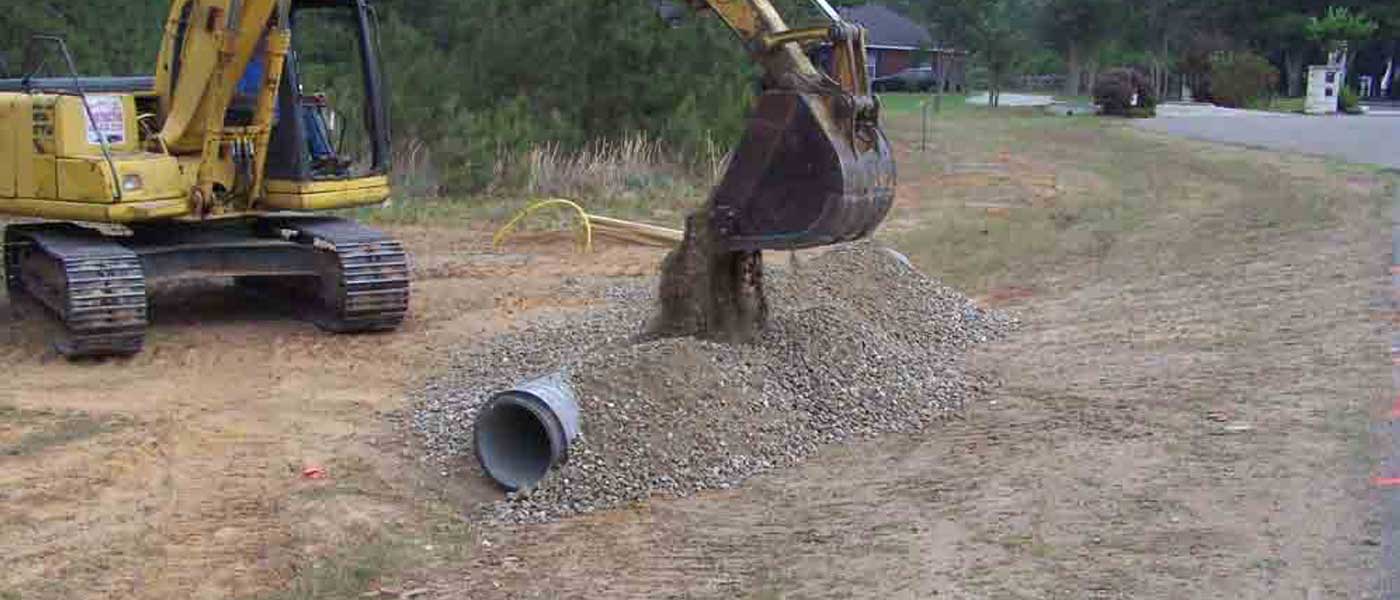Safe and Effective Tree Removal Solutions
Safe and Effective Tree Removal Solutions
Blog Article
Understanding Culvert Installation: Increase Your Land Water Drainage Efforts
From picking the ideal materials to implementing finest methods, understanding culvert installment can significantly boost the efficiency and durability of your land drainage system. By understanding the details of culvert setup, you can optimize your drainage initiatives and make sure sustainable land usage practices.
Significance of Culvert Setup
Making sure proper culvert setup is extremely important for maintaining efficient land water drainage systems. Culverts play a crucial function in handling water flow, protecting against erosion, and keeping the architectural integrity of roadways, bridges, and other infrastructure. Appropriate installation of culverts helps to direct water far from roads and structures, decreasing the threat of flooding and water damage. Additionally, well-installed culverts help in preventing sediment build-up, which can lead to clogs and decreased water circulation.
Correct Sizing and Positioning

Proper placement of culverts is just as important. Culverts need to be placed at the most affordable point of the location needing drainage to ensure effective water circulation.
Material Choice Tips
Selecting the appropriate materials is vital in guaranteeing the toughness and performance of culverts for efficient land drainage systems. When picking products for culvert installation, it is critical to take into consideration variables such as the water circulation price, soil make-up, and ecological problems of the website.
Among one of the most usual materials made use of for culverts is corrugated metal (Tree removal). Corrugated metal culverts are long lasting, cost-effective, and simple to mount. They are appropriate for locations with high water flow prices and can withstand hefty lots. One more popular choice is concrete culverts, which provide excellent stamina and long life. Concrete culverts are suitable for areas susceptible to rust or when a much longer service life is desired.
For environmentally sensitive areas, plastic culverts might be preferred. Plastic culverts are light-weight, immune to deterioration, and easy to transport and set up. They are likewise recognized for their smooth interior, which aids to keep efficient water flow. Furthermore, in locations where natural aesthetics are necessary, products like rock or timber can be made use of to create culverts that mix perfectly right into the surroundings. Inevitably, the choice of product need to be based on a comprehensive evaluation of the specific needs and conditions of the land drainage task.
Setup Strategies and Best Practices
Provided the original site crucial relevance of product option in guaranteeing the capability and durability of culverts, the installation techniques and finest techniques play a crucial duty in the overall success of land drainage systems. Appropriate installation is essential to avoid problems such as leakages, falls down, or clogs that can jeopardize the performance of the culvert.

Throughout setup, treatment has to be taken to straighten the culvert correctly and provide proper support Learn More Here to stop contortion. Backfilling should be done gradually and compacted in layers to prevent gaps and settlement. Proper compaction is vital to stop moving or sinking of the culvert with time.

Maintenance and Long-Term Treatment
Implementing a thorough maintenance strategy is necessary for ensuring the durability and effective performance of culverts in land water drainage systems. Normal examinations must be performed to check for any type of signs of damage, obstructions, or erosion that could compromise the performance of the culvert. Clearing up debris such as fallen leaves, branches, and sediment is essential to avoid clogging and preserve the flow capacity of the culvert. Vegetation control around the culvert location is likewise important to stop roots from causing architectural damage.
In addition, resolving any kind of problems promptly and making essential repair work or replacements can assist stop expensive problems in the future. Regular upkeep tasks may include cleansing, fixing joints, enhancing inlet and outlet structures, and guaranteeing appropriate slope and placement of the culvert. Keeping thorough records of maintenance activities, inspections, and repair services is vital for tracking the problem of the culvert gradually and intending future upkeep demands. By remaining positive and executing a complete upkeep strategy, land drainage systems can operate successfully and efficiently for several years to come.
Final Thought
Finally, understanding culvert installment is important for reliable land water drainage. Appropriate sizing, placement, material option, setup methods, and maintenance are key elements to think about. By adhering to finest techniques and executing long-term treatment strategies, landowners can increase their drain initiatives and make sure the longevity and capability of their culverts. It is necessary to prioritize these facets to avoid water damage, disintegration, and various other costly problems on the home.
Report this page